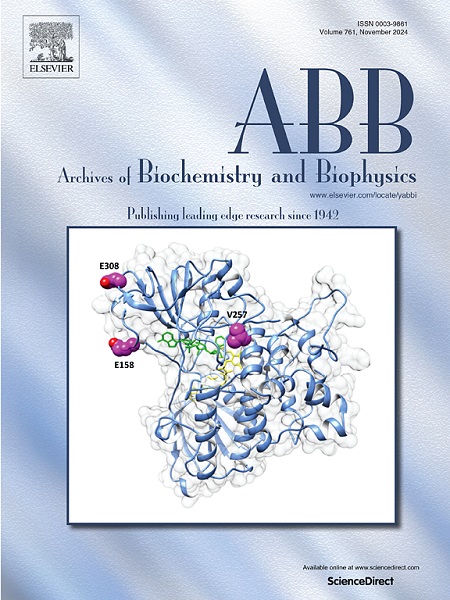Unveiling the cyclopropyl appended acyl thiourea derivatives as antimicrobial, α-amylase and proteinase K inhibitors: Design, synthesis, biological evaluation, molecular docking, DFT and ADMET studies
IF 3.8
3区 生物学
Q2 BIOCHEMISTRY & MOLECULAR BIOLOGY
引用次数: 0
Abstract
Acyl thiourea scaffolds are frequently employed in drug development to discern unique and essential therapies for the eradication of the most challenging diseases. Hence, we developed a library of novel cyclopropyl incorporating acyl thiourea derivatives (4a-j) and evaluated their antimicrobial, α-amylase, and proteinase K inhibition potential. Compound (4h) (4-methoxy) demonstrated the strongest α-amylase inhibition (IC50 = 1.572 ± 0.017 μM), while compound (4j) (3,4,5-trimethoxy) exhibited potent proteinase K inhibition (IC50 = 1.718 ± 0.061 μM), comparable to the standard acarbose (IC50 = 1.063 ± 0.013 μM) and phenyl methyl sulfonyl fluoride (IC50 = 0.119 ± 0.014 μM). The unsubstituted compound (4a) emerged as the most potent antifungal agent (17 mm zone of inhibition), outperforming the positive control Terbinafine (zone of inhibition 16 mm). These compounds (4a-j) also displayed moderate antibacterial activity. SAR analysis revealed the influences of various substitutions on the acyl thiourea scaffold. Computational studies, including DFT, molecular docking, and ADMET predictions, supported the biological findings and identified these compounds as promising inhibitors of α-amylase, proteinase K, and microbial pathogens.

揭示环丙基附加酰基硫脲衍生物作为抗菌、α-淀粉酶和蛋白酶K抑制剂:设计、合成、生物学评价、分子对接、DFT和ADMET研究。
酰基硫脲支架经常用于药物开发,以识别根除最具挑战性疾病的独特和必要的疗法。因此,我们建立了一个新的含酰基硫脲衍生物环丙基文库(4a-j),并评估了它们的抗菌、α-淀粉酶和蛋白酶K抑制潜力。化合物(4h)(4-甲氧基)对α-淀粉酶的抑制作用最强(IC50 = 1.572±0.017),而化合物(4j)(3,4,5-三甲氧基)对蛋白酶K的抑制作用最强(1.718±0.061 μM),与标准阿卡波糖(IC50 = 1.063±0.013 μM)和苯基甲基磺酰氟(IC50 = 0.119±0.014 μM)相当。未取代化合物(4a)成为最有效的抗真菌剂(17 mm抑制区),优于阳性对照特比萘芬(16 mm抑制区)。这些化合物(4a-j)也显示出中等的抗菌活性。SAR分析揭示了各种取代对酰基硫脲支架的影响。计算研究,包括DFT、分子对接和ADMET预测,支持生物学发现,并确定这些化合物是α-淀粉酶、蛋白酶K和微生物病原体的有希望的抑制剂。
本文章由计算机程序翻译,如有差异,请以英文原文为准。
求助全文
约1分钟内获得全文
求助全文
来源期刊

Archives of biochemistry and biophysics
生物-生化与分子生物学
CiteScore
7.40
自引率
0.00%
发文量
245
审稿时长
26 days
期刊介绍:
Archives of Biochemistry and Biophysics publishes quality original articles and reviews in the developing areas of biochemistry and biophysics.
Research Areas Include:
• Enzyme and protein structure, function, regulation. Folding, turnover, and post-translational processing
• Biological oxidations, free radical reactions, redox signaling, oxygenases, P450 reactions
• Signal transduction, receptors, membrane transport, intracellular signals. Cellular and integrated metabolism.
 求助内容:
求助内容: 应助结果提醒方式:
应助结果提醒方式:


